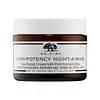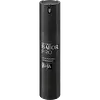What's inside
What's inside
 Key Ingredients
Key Ingredients

 Benefits
Benefits

 Concerns
Concerns

 Ingredients Side-by-side
Ingredients Side-by-side

Water
Skin ConditioningMethyl Trimethicone
Skin ConditioningSqualane
EmollientCaprylic/Capric Triglyceride
MaskingPolysorbate 40
EmulsifyingCetyl Alcohol
EmollientButylene Glycol
HumectantDimethicone
EmollientMyristyl Alcohol
EmollientPEG-100 Stearate
Jojoba Esters
EmollientGlycerin
HumectantCitrus Aurantium Amara Peel Oil
Skin ConditioningCitrus Aurantium Dulcis Peel Oil
MaskingCitrus Aurantium Amara Flower Oil
MaskingCinnamomum Zeylanicum Leaf Oil
MaskingValeriana Officinalis Root Oil
MaskingFerula Galbaniflua Resin Oil
AntimicrobialCitrus Aurantium Dulcis Fruit Extract
MaskingVanilla Planifolia Fruit Extract
Skin ConditioningLimonene
PerfumingLinalool
PerfumingCitral
PerfumingCitronellol
PerfumingCoffea Arabica Seed Extract
MaskingCitric Acid
BufferingTartaric Acid
BufferingLactic Acid
BufferingSalicylic Acid
MaskingBiotin
AntiseborrhoeicCastanea Sativa Seed Extract
Skin ConditioningTocopheryl Acetate
AntioxidantMagnesium Ascorbyl Phosphate
AntioxidantCI 77220
Cosmetic ColorantAloe Barbadensis Leaf Juice
Skin ConditioningSucrose
HumectantElaeis Guineensis Oil
EmollientHordeum Vulgare Extract
EmollientTriticum Vulgare Germ Extract
Skin ConditioningGlyceryl Stearate
EmollientSimmondsia Chinensis Butter
Skin ConditioningHypnea Musciformis Extract
Skin ProtectingLinoleic Acid
CleansingGelidiella Acerosa Extract
Skin ProtectingSqualene
EmollientPhospholipids
Skin ConditioningPhytosterols
Skin ConditioningTocotrienols
Skin ConditioningEthylhexylglycerin
Skin ConditioningCarbomer
Emulsion StabilisingTrehalose
HumectantSodium PCA
HumectantArginine
MaskingCaprylyl Glycol
EmollientCetearyl Alcohol
EmollientSodium Hyaluronate
HumectantTocopherol
AntioxidantCeteareth-20
CleansingHexylene Glycol
EmulsifyingTromethamine
BufferingSodium Dehydroacetate
PreservativePhenoxyethanol
PreservativeWater, Methyl Trimethicone, Squalane, Caprylic/Capric Triglyceride, Polysorbate 40, Cetyl Alcohol, Butylene Glycol, Dimethicone, Myristyl Alcohol, PEG-100 Stearate, Jojoba Esters, Glycerin, Citrus Aurantium Amara Peel Oil, Citrus Aurantium Dulcis Peel Oil, Citrus Aurantium Amara Flower Oil, Cinnamomum Zeylanicum Leaf Oil, Valeriana Officinalis Root Oil, Ferula Galbaniflua Resin Oil, Citrus Aurantium Dulcis Fruit Extract, Vanilla Planifolia Fruit Extract, Limonene, Linalool, Citral, Citronellol, Coffea Arabica Seed Extract, Citric Acid, Tartaric Acid, Lactic Acid, Salicylic Acid, Biotin, Castanea Sativa Seed Extract, Tocopheryl Acetate, Magnesium Ascorbyl Phosphate, CI 77220, Aloe Barbadensis Leaf Juice, Sucrose, Elaeis Guineensis Oil, Hordeum Vulgare Extract, Triticum Vulgare Germ Extract, Glyceryl Stearate, Simmondsia Chinensis Butter, Hypnea Musciformis Extract, Linoleic Acid, Gelidiella Acerosa Extract, Squalene, Phospholipids, Phytosterols, Tocotrienols, Ethylhexylglycerin, Carbomer, Trehalose, Sodium PCA, Arginine, Caprylyl Glycol, Cetearyl Alcohol, Sodium Hyaluronate, Tocopherol, Ceteareth-20, Hexylene Glycol, Tromethamine, Sodium Dehydroacetate, Phenoxyethanol
Water
Skin ConditioningPentylene Glycol
Skin ConditioningArginine
MaskingGlycolic Acid
BufferingXanthan Gum
EmulsifyingPhenoxyethanol
PreservativePanthenol
Skin ConditioningSodium Lactate
BufferingSodium PCA
HumectantGlycerin
HumectantLecithin
EmollientEthylhexylglycerin
Skin ConditioningBiosaccharide Gum-1
HumectantSodium Benzoate
MaskingGlycine
BufferingFructose
HumectantInositol
HumectantLactic Acid
BufferingNiacinamide
SmoothingUrea
BufferingPantolactone
HumectantCitric Acid
BufferingHexanoyl Dipeptide-3 Norleucine Acetate
Skin ConditioningWater, Pentylene Glycol, Arginine, Glycolic Acid, Xanthan Gum, Phenoxyethanol, Panthenol, Sodium Lactate, Sodium PCA, Glycerin, Lecithin, Ethylhexylglycerin, Biosaccharide Gum-1, Sodium Benzoate, Glycine, Fructose, Inositol, Lactic Acid, Niacinamide, Urea, Pantolactone, Citric Acid, Hexanoyl Dipeptide-3 Norleucine Acetate
 Reviews
Reviews

Ingredients Explained
These ingredients are found in both products.
Ingredients higher up in an ingredient list are typically present in a larger amount.
Arginine is an amino acid that is important for human development. Your body uses is it to produce hair keratin and skin collagen.
As a cosmetic ingredient, Arginine has antioxidant properties and can also help repair damaged skin. This ingredient is derived either synthetically or from animals.
Arginine isn't fungal acne safe when used in the presence of other lipids (fats, fatty acids, oils, esters, etc). Oils and fats occur naturally within the skin, so take caution when using Arginine if you're prone to fungal acne.
Learn more about ArginineCitric Acid is an alpha hydroxy acid (AHA) naturally found in citrus fruits like oranges, lemons, and limes.
Like other AHAs, citric acid can exfoliate skin by breaking down the bonds that hold dead skin cells together. This helps reveal smoother and brighter skin underneath.
However, this exfoliating effect only happens at high concentrations (20%) which can be hard to find in cosmetic products.
Due to this, citric acid is usually included in small amounts as a pH adjuster. This helps keep products slightly more acidic and compatible with skin's natural pH.
In skincare formulas, citric acid can:
While it can provide some skin benefits, research shows lactic acid and glycolic acid are generally more effective and less irritating exfoliants.
Most citric acid used in skincare today is made by fermenting sugars (usually from molasses). This synthetic version is identical to the natural citrus form but easier to stabilize and use in formulations.
Read more about some other popular AHA's here:
Learn more about Citric AcidEthylhexylglycerin (we can't pronounce this either) is commonly used as a preservative and skin softener. It is derived from glyceryl.
You might see Ethylhexylglycerin often paired with other preservatives such as phenoxyethanol. Ethylhexylglycerin has been found to increase the effectiveness of these other preservatives.
Glycerin is already naturally found in your skin. It helps moisturize and protect your skin.
A study from 2016 found glycerin to be more effective as a humectant than AHAs and hyaluronic acid.
As a humectant, it helps the skin stay hydrated by pulling moisture to your skin. The low molecular weight of glycerin allows it to pull moisture into the deeper layers of your skin.
Hydrated skin improves your skin barrier; Your skin barrier helps protect against irritants and bacteria.
Glycerin has also been found to have antimicrobial and antiviral properties. Due to these properties, glycerin is often used in wound and burn treatments.
In cosmetics, glycerin is usually derived from plants such as soybean or palm. However, it can also be sourced from animals, such as tallow or animal fat.
This ingredient is organic, colorless, odorless, and non-toxic.
Glycerin is the name for this ingredient in American English. British English uses Glycerol/Glycerine.
Learn more about GlycerinLactic Acid is another well-loved alpha hydroxy acid (AHA). It is gentler than glycolic acid but still highly effective.
Its main role is to exfoliate the surface of the skin by loosening the “glue” that holds dead skin cells together. Shedding those old cells leads to smoother, softer, and more even-toned skin.
Because lactic acid molecules are larger than glycolic acid, they don’t penetrate as deeply. This means they’re less likely to sting or irritate, making it a great choice for beginners or those with sensitive skin.
Like glycolic acid, it can:
Lactic acid also acts as a humectant (like hyaluronic acid). It can draw water into the skin to improve hydration and also plays a role in the skin's natural moisturizing factor (NMF) in the form of sodium lactate.
Studies show it can boost ceramide production to strengthen the skin barrier and even help balance the skin’s microbiome.
To get results, choose products with a pH between 3-4.
Lower strengths (5-12%) focus on surface exfoliation; higher strengths (12% and up) can reach deeper in the dermis (deeper, supportive layer) to improve skin texture and firmness over time.
Though it was originally derived from milk, most modern lactic acid used in skincare is vegan. It is made through non-dairy fermentation to create a bio-identical and stable form suitable for all formulations.
When lactic acid shows up near the end of an ingredient list, it usually means the brand added just a tiny amount to adjust the product’s pH.
Legend has it that Cleopatra used to bathe in sour milk to help reduce wrinkles.
Lactic acid is truly a gentle multitasker: it exfoliates, hydrates, strengthens, and brightens. It's a great ingredient for giving your skin a smooth, glowing, and healthy look without the harshness of stronger acids.
Read more about some other popular AHA's here:
Learn more about Lactic AcidPhenoxyethanol is a preservative that has germicide, antimicrobial, and aromatic properties. Studies show that phenoxyethanol can prevent microbial growth. By itself, it has a scent that is similar to that of a rose.
It's often used in formulations along with Caprylyl Glycol to preserve the shelf life of products.
Sodium PCA is the sodium salt of pyroglutamic acid. It is naturally occurring in our skin's natural moisturizing factors where it works to maintain hydration.
The PCA stands for pyrrolidone carboxylic acid, a natural amino acid derivative.
This ingredient has skin conditioning, anti-inflammatory, and humectant properties. Humectants help hydrate your skin by drawing moisture from the air. This helps keep your skin moisturized.
Learn more about Sodium PCAWater. It's the most common cosmetic ingredient of all. You'll usually see it at the top of ingredient lists, meaning that it makes up the largest part of the product.
So why is it so popular? Water most often acts as a solvent - this means that it helps dissolve other ingredients into the formulation.
You'll also recognize water as that liquid we all need to stay alive. If you see this, drink a glass of water. Stay hydrated!
Learn more about Water